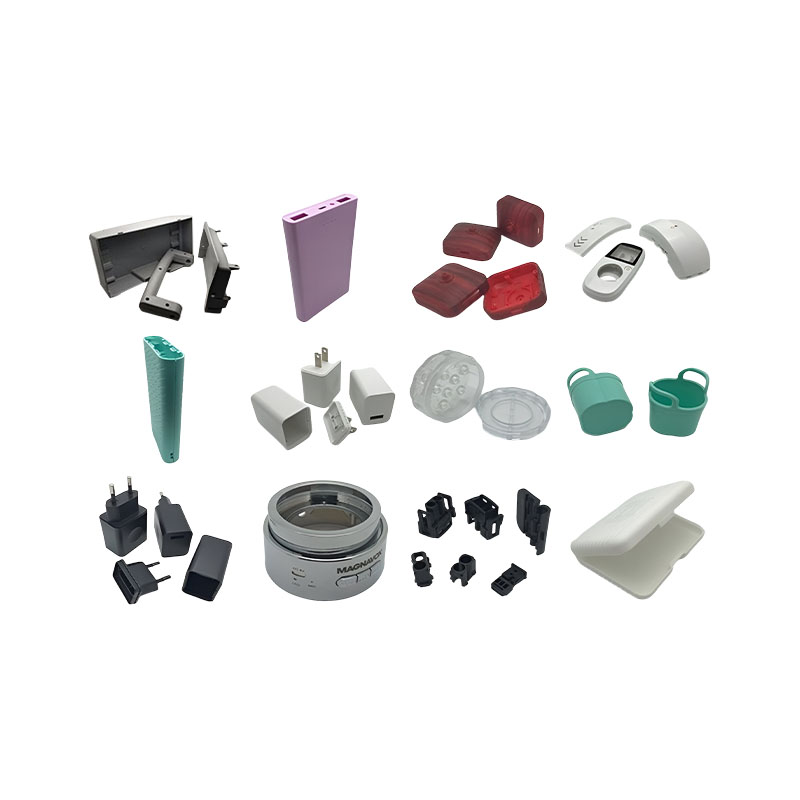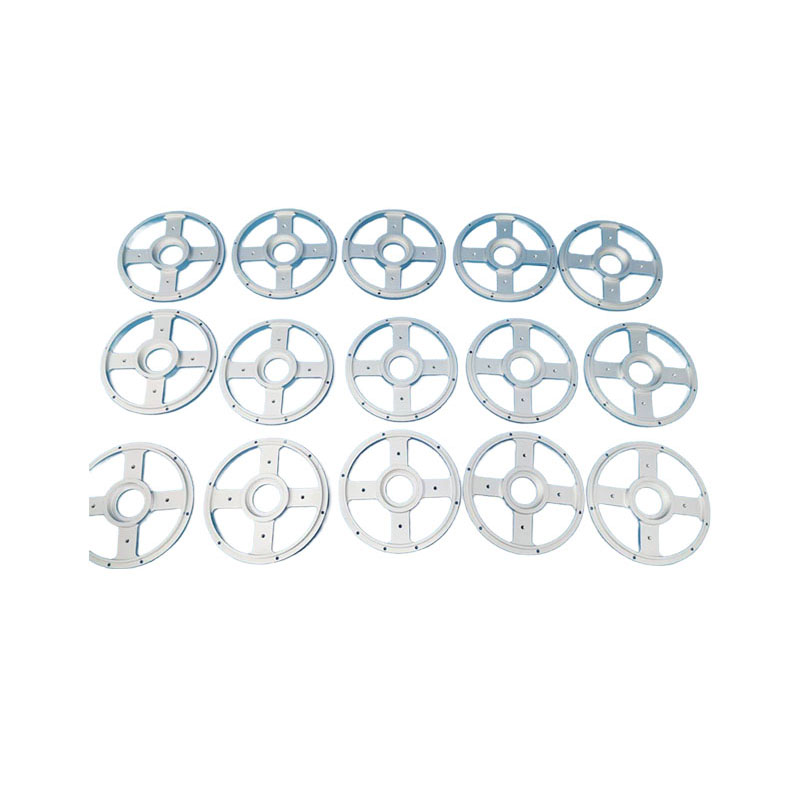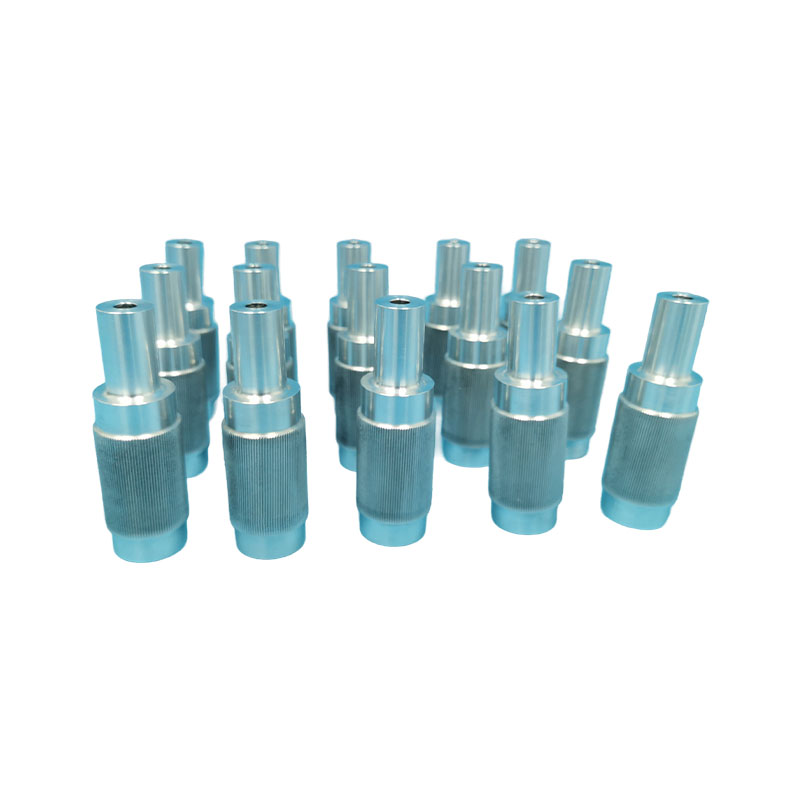How can aluminum CNC turning be efficiently achieved through multi-axis turning?
Release Time : 2025-10-16
In modern precision manufacturing, aluminum alloys are widely used in industries such as aerospace, lightweight automotive, high-end equipment manufacturing, and consumer electronics due to their low density, high specific strength, excellent thermal conductivity, ease of machining, and recyclability. With increasingly complex product structures, traditional three-axis CNC turning is no longer able to meet the demands of high integration, high precision, and a minimal number of process steps. The rise of multi-axis CNC turning technology has provided a revolutionary solution for efficient aluminum CNC turning. By adding rotating and translating axes, multi-axis turning machines can perform multiple processes—turning, milling, drilling, and tapping—in a single setup, significantly improving machining efficiency and precision and achieving near-net-shape results for complex aluminum CNC turning.
1. Basic Principles and Structural Advantages of Multi-Axis Turning
Multi-axis CNC turning typically refers to four-, five-, or combined turning and milling centers. Its core concept is the integration of a C-axis and additional motion axes, such as a Y-axis, B-axis, or subspindle, in addition to the traditional X- and Z-axis. Taking a dual-spindle, dual-turret, five-axis milling and turning machine as an example, the workpiece can be continuously rotated and positioned while clamped in the spindle. The Y-axis allows tool movement in the vertical plane, and the B-axis drives a live tool for angled cutting. This multi-degree-of-freedom motion system enables the tool to approach the workpiece from multiple directions, breaking the limitations of traditional turning, which is limited to axial and radial feeds. This allows for the machining of complex geometric features such as eccentric holes, bevels, spiral grooves, and three-dimensional curved surfaces.
2. Single-clamping, multi-surface machining
Aluminum CNC turning is commonly used in the manufacture of structural parts such as housings, joints, drive shafts, and hydraulic valve bodies. These parts often contain multiple features such as external diameters, internal bores, end faces, keyways, cross holes, and flange threads. Using a traditional lathe requires multiple clamping and repeated machine changes, which is not only inefficient but also leads to cumulative positioning errors that seriously affect accuracy. Multi-axis turning, however, uses live tools linked to the spindle, allowing non-rotationally symmetrical machining such as milling, drilling, and tapping to be performed directly after the workpiece is rotated and positioned. For example, an aluminum alloy valve body with multiple radial holes and face splines traditionally requires three processes: lathe, drilling, and milling. Multi-axis turning, however, can complete all of these operations in a single setup, reducing setup errors, ensuring geometric tolerances, and improving overall consistency.
3. Improved Efficiency and Shortened Production Cycles
The efficiency of multi-axis turning lies in two key aspects: process centralization and high-speed cutting. First, process centralization significantly reduces auxiliary time for loading and unloading, machine changeovers, and tool setting, making it particularly suitable for flexible production of small and medium-sized batches and a wide variety of products. Second, aluminum alloy inherently exhibits excellent cutting properties. Combined with the high rigidity and high-speed spindles of multi-axis machine tools, high-speed turning and milling can be achieved. For example, using carbide or PCD tools, under optimal cutting parameters, feed rates and material removal rates can be significantly increased. Combined with automated loading and unloading systems, multi-axis turning can achieve 24-hour continuous production, significantly boosting productivity.
4. Accommodate Complex Structures and Achieve High-Precision Forming
Multi-axis linkage control allows for more flexible tool paths, enabling precise machining of complex surfaces and minute features. For example, aluminum alloy brackets or drone components in the aerospace industry often require machining thin walls, deep cavities, irregular bosses, and other easily deformable structures. Multi-axis turning effectively controls cutting forces, reduces vibration and deformation, and ensures uniform wall thickness and dimensional stability through optimized tool angles, layered cutting, and micro-feeding. Furthermore, high-precision control of C-axis indexing and B-axis swing angles ensures phase accuracy for multi-faceted surfaces, meeting stringent assembly requirements.
5. Intelligent Programming and Process Optimization
The complexity of multi-axis turning relies on advanced CAM software. Modern programming systems enable 3D model import, automatic feature recognition, toolpath simulation, and collision detection, significantly reducing programming complexity. Simulation-based optimization of cutting parameters, toolpaths, and tool change sequences avoids idle strokes, reduces tool wear, and further improves machining efficiency and safety.
Multi-axis CNC turning technology, integrating multiple motion axes, live tools, and intelligent control systems, has revolutionized the traditional aluminum CNC turning process. It not only achieves efficient "one-clamp, complete machining" but also sets new standards in precision, complexity, and automation.
1. Basic Principles and Structural Advantages of Multi-Axis Turning
Multi-axis CNC turning typically refers to four-, five-, or combined turning and milling centers. Its core concept is the integration of a C-axis and additional motion axes, such as a Y-axis, B-axis, or subspindle, in addition to the traditional X- and Z-axis. Taking a dual-spindle, dual-turret, five-axis milling and turning machine as an example, the workpiece can be continuously rotated and positioned while clamped in the spindle. The Y-axis allows tool movement in the vertical plane, and the B-axis drives a live tool for angled cutting. This multi-degree-of-freedom motion system enables the tool to approach the workpiece from multiple directions, breaking the limitations of traditional turning, which is limited to axial and radial feeds. This allows for the machining of complex geometric features such as eccentric holes, bevels, spiral grooves, and three-dimensional curved surfaces.
2. Single-clamping, multi-surface machining
Aluminum CNC turning is commonly used in the manufacture of structural parts such as housings, joints, drive shafts, and hydraulic valve bodies. These parts often contain multiple features such as external diameters, internal bores, end faces, keyways, cross holes, and flange threads. Using a traditional lathe requires multiple clamping and repeated machine changes, which is not only inefficient but also leads to cumulative positioning errors that seriously affect accuracy. Multi-axis turning, however, uses live tools linked to the spindle, allowing non-rotationally symmetrical machining such as milling, drilling, and tapping to be performed directly after the workpiece is rotated and positioned. For example, an aluminum alloy valve body with multiple radial holes and face splines traditionally requires three processes: lathe, drilling, and milling. Multi-axis turning, however, can complete all of these operations in a single setup, reducing setup errors, ensuring geometric tolerances, and improving overall consistency.
3. Improved Efficiency and Shortened Production Cycles
The efficiency of multi-axis turning lies in two key aspects: process centralization and high-speed cutting. First, process centralization significantly reduces auxiliary time for loading and unloading, machine changeovers, and tool setting, making it particularly suitable for flexible production of small and medium-sized batches and a wide variety of products. Second, aluminum alloy inherently exhibits excellent cutting properties. Combined with the high rigidity and high-speed spindles of multi-axis machine tools, high-speed turning and milling can be achieved. For example, using carbide or PCD tools, under optimal cutting parameters, feed rates and material removal rates can be significantly increased. Combined with automated loading and unloading systems, multi-axis turning can achieve 24-hour continuous production, significantly boosting productivity.
4. Accommodate Complex Structures and Achieve High-Precision Forming
Multi-axis linkage control allows for more flexible tool paths, enabling precise machining of complex surfaces and minute features. For example, aluminum alloy brackets or drone components in the aerospace industry often require machining thin walls, deep cavities, irregular bosses, and other easily deformable structures. Multi-axis turning effectively controls cutting forces, reduces vibration and deformation, and ensures uniform wall thickness and dimensional stability through optimized tool angles, layered cutting, and micro-feeding. Furthermore, high-precision control of C-axis indexing and B-axis swing angles ensures phase accuracy for multi-faceted surfaces, meeting stringent assembly requirements.
5. Intelligent Programming and Process Optimization
The complexity of multi-axis turning relies on advanced CAM software. Modern programming systems enable 3D model import, automatic feature recognition, toolpath simulation, and collision detection, significantly reducing programming complexity. Simulation-based optimization of cutting parameters, toolpaths, and tool change sequences avoids idle strokes, reduces tool wear, and further improves machining efficiency and safety.
Multi-axis CNC turning technology, integrating multiple motion axes, live tools, and intelligent control systems, has revolutionized the traditional aluminum CNC turning process. It not only achieves efficient "one-clamp, complete machining" but also sets new standards in precision, complexity, and automation.







